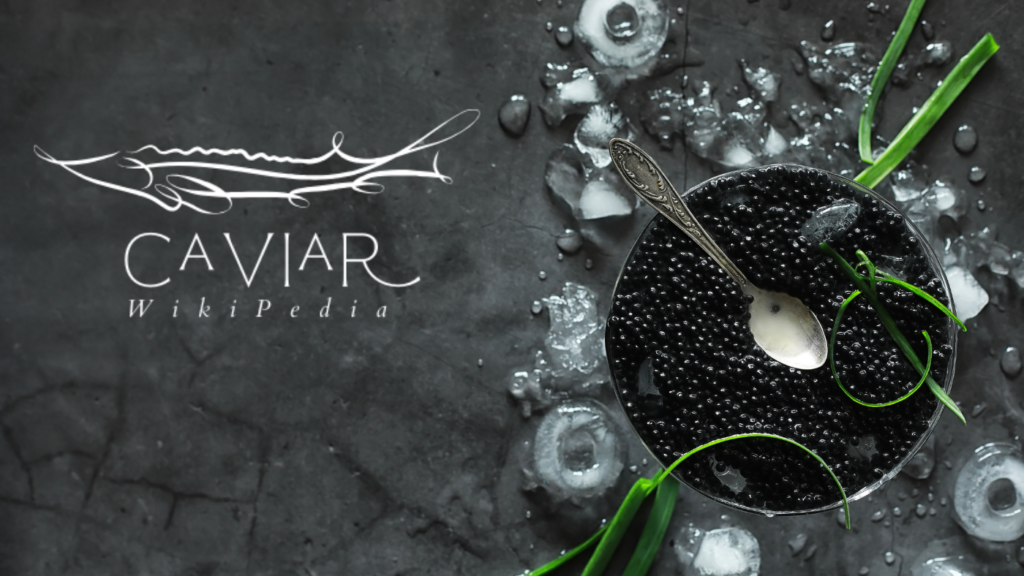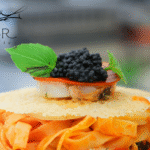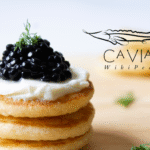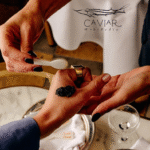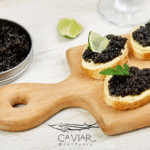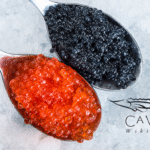Caviar is a special food. It’s made from sturgeon fish eggs. In Spain, caviar is not just bought from other countries. It’s made here, too! Spain makes some of the best caviar in the world. Let’s explore why caviar in Spain is so amazing.
A Bit of History
Caviar has been in Spain for a long time. In the 1600s, people wrote about it in books. They found sturgeon in rivers like the Guadalquivir. But fishing too much hurt the fish. By the 1990s, wild sturgeon were gone. Now, farms make caviar instead. This helps keep fish safe.
Where Caviar is Made in Spain?
Spain has two main places for caviar: Granada and the Pyrenees.
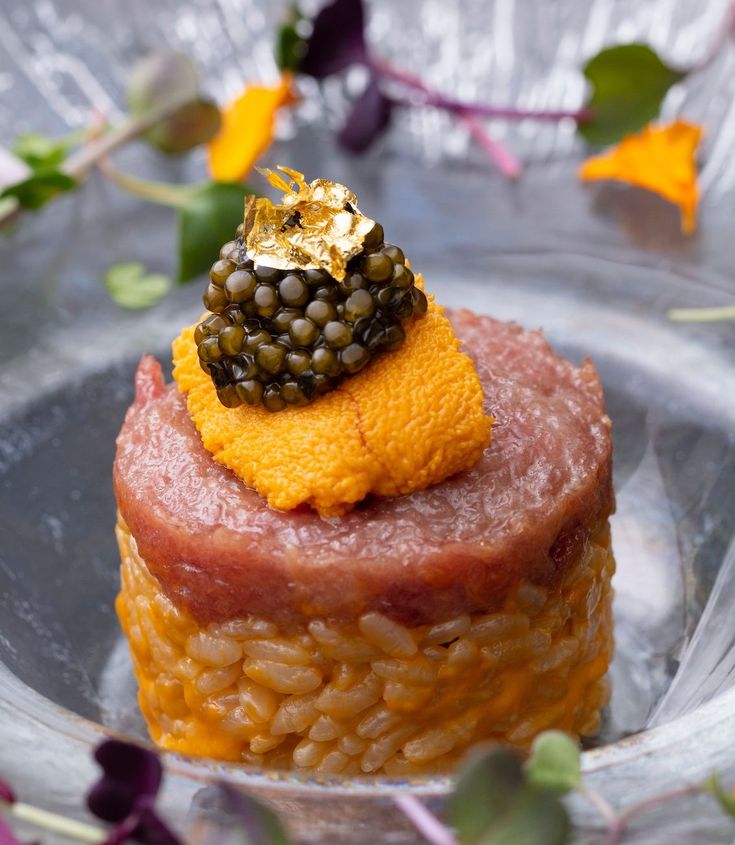
Granada
In Granada, there’s a place called Riofrío. It’s a farm that makes caviar. They started in 1987. The water there is clean and cold. It’s perfect for sturgeon. Riofrío makes organic caviar. That means no chemicals are used. Their caviar is famous all over the world.
The Pyrenees
Another place is Nacarii in the Pyrenees. The water here comes from the mountains. It’s pure and fresh. Nacarii makes different types of caviar. They sell it to places like Japan and the USA. People love it because it tastes so good.
How Caviar is Made?
Making caviar takes time. Sturgeon fish grow slowly. Some take 16 years to make eggs! Farmers take care of the fish. They give them clean water and good food. When the eggs are ready, they collect them carefully. Then, they add a little salt. This makes the caviar taste just right.
Types of Caviar in Spain
Spain has many kinds of caviar. Here are some:
- Organic Caviar: Made in Riofrío. It’s natural and has no chemicals.
- Traditional Caviar: Tastes like old-style caviar from other countries.
- Premium Caviar: Has big eggs. It’s very fancy and costs more.
- Nacarii Caviar: Comes in three types. Each one is special.
You can buy caviar in tins or small jars. Some caviar is used in cocktails or sauces too!
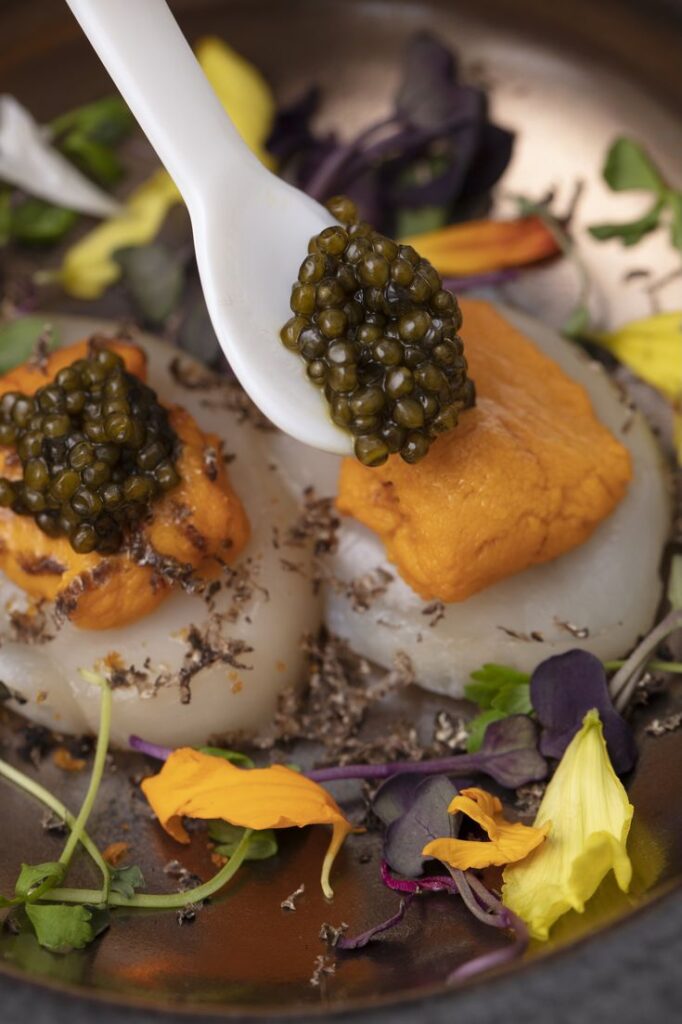
How People Eat Caviar in Spain?
In Spain, caviar is eaten in fun ways. Here are some ideas:
- On Its Own: Use a special spoon made of shell. It keeps the taste pure.
- With Bread: Put caviar on bread with butter. It’s simple and yummy.
- In Tapas: Tapas are small dishes. Caviar goes on ham or eggs. It makes them fancy.
- In Restaurants: Chefs use caviar in big meals. For example, they mix it with potatoes or fish.
People like to drink Cava with caviar. Cava is a bubbly Spanish wine. It tastes great together!
Caviar in Spanish Culture
Caviar is special in Spain. It’s used at parties and big events. Fancy restaurants serve it. People feel proud of caviar Spain makes. It shows Spain can make luxury food too. Chefs like Diego Gallegos love using it. Even famous chefs from other countries say Spanish caviar is awesome.
Why Spanish Caviar is Different?
Spanish caviar is special for a few reasons:
- Organic: Many farms make caviar without chemicals. This is good for people and the earth.
- Sustainable: Farms help save sturgeon. They don’t hurt wild fish.
- High Quality: The water and care make the caviar taste amazing.
Spain sends caviar to places like the UK, Japan, and the USA. Everyone wants it!
Caviar and the Environment
In the past, fishing hurt sturgeon. Rivers got dirty too. Now, farms like Riofrío and Nacarii are careful. They use clean water. They make sure fish are healthy. This helps the environment. It also means we can enjoy caviar for a long time.
Caviar in Restaurants
Fancy restaurants in Spain love caviar. They put it in small dishes called tapas. For example, they might make a dish with ham and caviar. Or eggs with caviar on top. Chefs get creative. They want every bite to taste perfect. People pay a lot for these meals because caviar is so special.
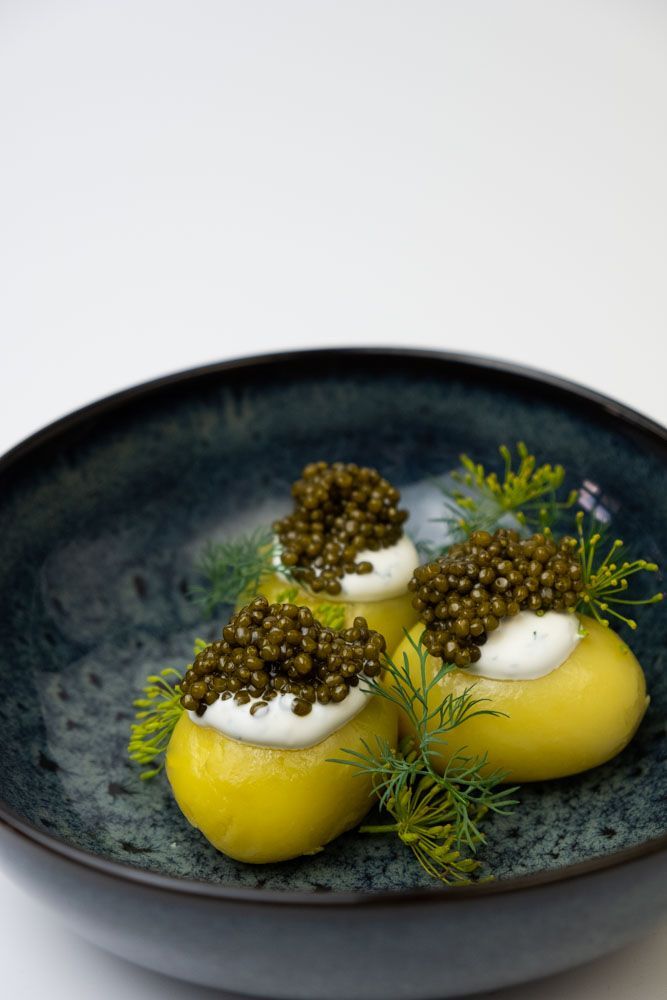
How Much Does Caviar Cost?
Caviar is not cheap. A small tin can cost 50 euros or more. Organic caviar from Riofrío might cost 400 euros for 200 grams. But people think it’s worth it. They buy it for special days, like weddings or holidays.
Caviar Around the World
Spain sends caviar to many countries. Places like Japan love it. Chefs in Europe use it too. Even famous people like Gordon Ramsay say Spanish caviar is great. This makes Spain proud. It shows they can make food as good as anyone else.
Fun Facts About Caviar in Spain
- Caviar was in a book called Don Quixote a long time ago!
- Riofrío was the first place to make organic caviar in the world.
- Sturgeon can live for many years before giving eggs.
- Caviar is best with a spoon that’s not metal. Metal changes the taste.
Challenges for Caviar Makers
Making caviar is not easy. Fish take years to grow. Farms need clean water all the time. If something goes wrong, it can hurt the fish. Also, caviar is expensive to make. Farmers work hard to keep prices fair. But they don’t want to lower quality.
The Future of Caviar in Spain
Caviar in Spain is getting more popular. More farms might start making it. People are learning how good it is. Restaurants will keep using it in new ways. Spain wants to keep making sustainable caviar. This means fish and rivers stay safe.
Why You Should Try Caviar?
If you like food, try caviar! It’s a treat. In Spain, you can find it in stores or restaurants. Start with a small tin. Taste it on bread or with eggs. You’ll see why people love caviar Spain makes. It’s rich, salty, and so delicious.
| Section | Details |
|---|---|
| History | Caviar has been known in Spain since the 1600s; wild sturgeon declined by the 1990s, leading to farmed caviar production. |
| Main Production Areas |
Granada (Riofrío): Known for organic caviar since 1987. Pyrenees (Nacarii): Produces various caviars using pure mountain water. |
| How Caviar is Made | Sturgeon fish take up to 16 years to produce eggs. Farmers raise them in clean water and collect eggs with care, adding salt for flavor. |
| Types of Caviar | Organic Caviar (Riofrío), Traditional Caviar, Premium Caviar (large eggs), Nacarii Caviar (three special types). |
| How Caviar is Eaten | On its own (shell spoon), with bread and butter, in tapas (with ham or eggs), in gourmet dishes (with potatoes or fish). Paired with Cava. |
| Cultural Importance | Served at parties and high-end restaurants. Symbol of Spanish luxury food. Supported by famous chefs like Diego Gallegos. |
| Why It’s Special | Organic, sustainable, high quality. Exported to Japan, UK, USA. Praised globally. |
| Environmental Impact | Farms use clean water and sustainable methods to protect sturgeon and rivers. |
| Restaurant Use | Used in creative tapas and gourmet meals. Popular in upscale Spanish restaurants. |
| Cost | Expensive. Example: €400 for 200g organic caviar. Bought for special occasions. |
| Global Reach | Spanish caviar is exported worldwide. Loved in Japan and praised by chefs like Gordon Ramsay. |
| Fun Facts | Mentioned in Don Quixote, Riofrío made world’s first organic caviar, sturgeons live long, non-metal spoons preserve flavor. |
| Challenges | Long fish maturation, need for clean water, high production costs, maintaining quality. |
| Future | Growing popularity, potential for more farms, focus on sustainable practices. |
| Why Try It? | Delicious and luxurious treat. Available in stores and restaurants. Great on bread or with eggs. |
Final Thoughts
Caviar in Spain is more than just food. It’s a story of hard work and care. Farms like Riofrío and Nacarii make something special. They help the environment too. Whether you eat it at a fancy dinner or a small party, caviar makes every moment better. Spain’s caviar is a treasure, and it’s here to stay.

